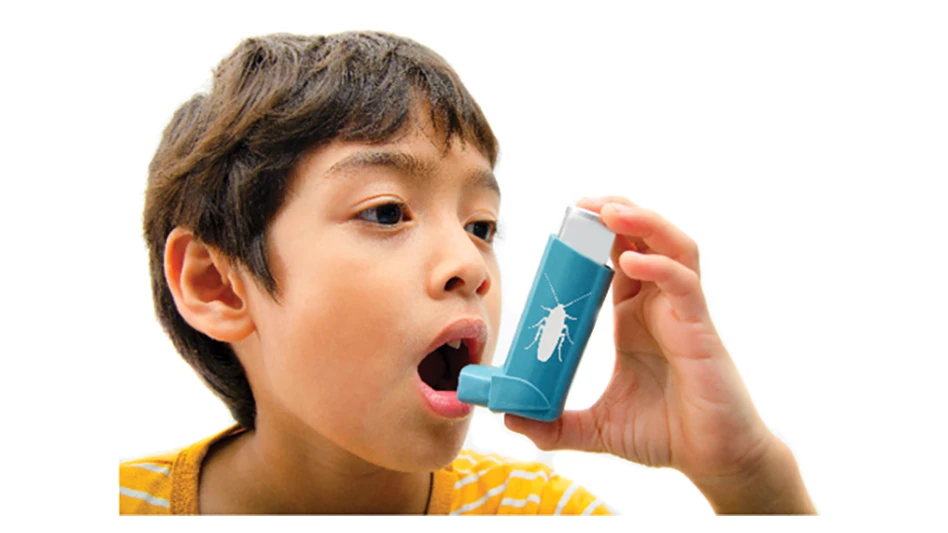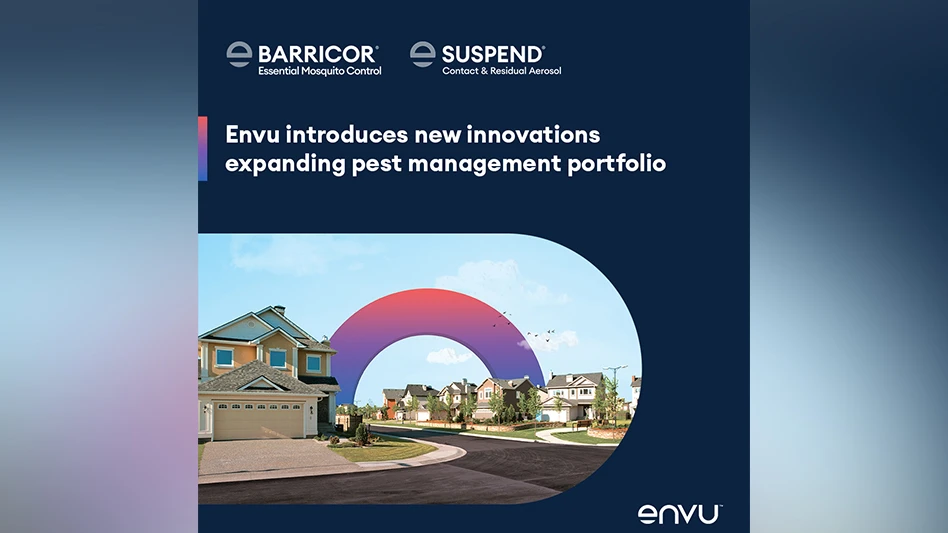 German cockroach photo by Clemson University - USDA Cooperative. Extension Slide Series, Bugwood.org German cockroach photo by Clemson University - USDA Cooperative. Extension Slide Series, Bugwood.org |
In low-income housing, the quality of pest control services is frequently dictated by the paucity of funds that owners of the property are willing or able to dedicate to the elimination of household pests. As a professional industry, it is important that a standard of care be maintained in the face of these difficulties. Professionals should not attempt to provide services solely based on the price that the owner is willing to pay but rather on the biology of the target pest and the most effective control methods for that pest.
A case in point is German cockroach control in low-income, multi-family housing. Most pest management professionals, when asked the standard of care, would cite the use of gel baits and void dusting, as well as sanitation recommendations that involve the removal of food debris and grease from surfaces, proper garbage storage, eliminating water leaks and the sealing of cracks and crevices to remove harborage.
In the capacity of a forensic entomologist specializing in habitability cases, the senior author (Field) performed more than 2,000 inspections in low-income apartments in the Greater Los Angeles area. During that time, he documented the severity of infestation, sanitation conditions and noted the type if any of pest management performed.
The Stats. Sixty-seven percent of the apartments had no professional pest control and in the majority of these apartments, the tenants attempted to control German cockroach infestations on their own. Apartments that only received treatments by tenants had infestations that were ranked as "severe" or "moderate" based on the following criteria:
- Infestations of visible populations of more than 100 foraging cockroaches were ranked "severe."
- Infestations of visible populations between 99-50 were ranked "moderate."
- Infestations of visible populations between 49-1 were ranked "light."
When over-the-counter products were used, 96 percent of the apartments showed little to no control. Overall, 3 percent of the infested units were abandoned by the tenants and 1 percent had infestations that were considered light or controlled.
The remaining 33 percent of inspected units had some form of professional pest management, however the frequency of the treatments were difficult to establish as records of services were not typically given to the tenants. Most units had received fewer than three professional treatments in the previous 12 months.
Areas inspected in low-income apartments included: kitchens (when applicable), cabinetry, stoves, refrigerators, microwaves, under sinks, and all accessible cracks and crevices. A flushing agent (pyrethrin) was used when possible. Photos and video of inspected units were taken and compiled for each location along with inspection notes. Inspections also included living rooms, bathrooms, bedrooms and closets. Typically, noted during inspections were the presence or absence of a roach species (specifically German cockroaches), bed bugs, rodents and conditions conducive for breeding vermin, such as water damage, water leaks, harborage, mildew and sanitation conditions.
German Cockroaches. Sanitation observations are based upon conditions found in the food preparation area and those that contribute to German cockroach breeding. Sanitation was ranked as follows:
- "Excellent sanitation" were those units that had no grease or food debris that would potentially contribute to cockroach breeding and where garbage was properly stored.
- "Good sanitation" were those units that had minimal grease or food debris and garbage properly stored.
- "Fair sanitation" were those units that had grease and/or food debris that was contributing to the breeding of cockroaches and garbage was or was not properly stored.
- "Poor sanitation" had significant grease and food debris that contributed to cockroach breeding and garbage that was or was not properly stored.
It was typically found that accessible water sources in the form of rotting sheetrock, plaster or wood due to leaks and non-grouted cracks were a greater contribution to breeding than poor sanitation. Eighty-nine percent of the apartments where a PMP had applied materials showed no evidence of the use of gel bait or dust formulations. Gel bait applications have been found to be highly effective in controlling German cockroaches in low-income housing (Wang, et al 1999) (Koehler 2003).


Tenants interviewed said the PMP used a compressed air sprayer and required that the cabinets be emptied prior to service. Many PMPs required that all materials and food that were removed from cabinets be placed on a table and covered to avoid pesticide contamination. This is an indication that fogging was performed alone or in conjunction with a compressed air sprayer application. Studies have compared the effectiveness of gel baiting and "traditional spraying" and have noted that gel baiting is significantly more effective. In fact, it has been noted that "spraying" did little to reduce German cockroach populations. (Miller et al, 2004).
In all, 82 percent of the inspected units that had used professional pest managers had infestations that were ranked either as "severe" or "moderate," indicating that the pest control was inadequate.
It was also noted that pest control was provided to units only where tenants reported having problems, without considering that cockroaches from one heavily infested unit would spread to an adjacent apartment, a phenomenon that is commonly encountered by PMPs.
In apartments that were treated by the tenants, a variety of materials were used. The most common treatment was an aerosol application that provided a stream of pesticide followed by total release aerosols. A low percentage of tenants used gel bait stations and gel baits in tubes. Gel baits in tubes were often misapplied, and bait was found in areas that were accessible to children and pets.
As is typical with low-income apartments that have severe German cockroach infestations, many children of low-income housing have asthma or allergies (Ginger Chew, et al 2006; David Rosenstreich, et al 1997; J.A. Mollet, et al 1997) that are potentially aggravated by the use of pesticides in an enclosed air space. Tenants are commonly untrained in the safe or proper application of these potentially dangerous compounds and therefore should not be attempting to perform pest control without the assistance of a trained professional.
The use of wet applications into cracks and crevices inside cabinets has long been shown to be an ineffective approach for the control of German cockroaches in multi-family buildings but surprisingly, this methodology is still widely used in our industry in low-income housing (Schal, 1988).
 In the Greater Los Angeles area, most PMPs are still using traditional spraying treatments — an ineffective protocol for the control of German cockroaches. (Photo: Gary Alpert, Harvard University, Bugwood.org) In the Greater Los Angeles area, most PMPs are still using traditional spraying treatments — an ineffective protocol for the control of German cockroaches. (Photo: Gary Alpert, Harvard University, Bugwood.org) |
Conclusions. Research indicates that the use of gel baiting in multi-family, low-income housing is more effective that "traditional" spraying treatments, yet in the Greater Los Angeles area, most PMPs are still using this ineffective treatment protocol for the control of German cockroaches and not meeting the industry standard.
The use of synthetic pyrethroids for spraying creates a condition where the most obvious harborage areas are treated with a highly repellent product, killing the exposed individuals relatively quickly but forcing the bulk of the population to remain within untreated cracks, crevices and wall voids where the population continues to grow and later to repopulate the cracks and crevices after the repellency has diminished.
This approach to cockroach control is further compounded by the fact that the common service sold by PMPs is to provide exterior service at a flat rate that includes a small percentage of interior applications. By performing interior treatments in a haphazard method, cockroaches are moved back and forth between apartments, never resulting in colony elimination in the structure.
PMPs need to adopt a more holistic approach to multi-family housing using wall void dusting with a non-repellent dust and a highly attractive and effective gel bait. Additionally, without the apartment owner's cooperation to reduce interior harborage using caulking and the elimination of moisture conditions, the PMP will have a difficult time getting control. The unfortunate consequences of this lack of effectiveness will be felt by the tenants of these buildings. As pest management professionals it is our job to do better.
Herb Field is COO, Lloyd Pest Control, San Diego, Calif.; and president, Entomology Services. John Klotz is an urban entomology specialist, formerly with the Department of Entomology, University of California, Riverside. Eric Paysen is technical director for Lloyd Pest Control, San Diego, Calif.
References Cited
Coby Schal. Relation Among Efficacy of Insecticides, Resistance Levels and Sanitation in the Control of the German Cockroach (Dictyoptera: Blattellidae). J. Econ. Entomology 81(2):536-544 (1988)
P. G. Koehler. German Cockroach Management in Low-Income Housing. University of Florida Extension.(2004)
D. M. Miller and F. Meek. Cost and Efficacy Comparison of Integrated Pest Management Strategies with Monthly Spray Insecticide Applications for German Cockroach (Dictyoptera: Blattellidae) Control in Public Housing. J. Econ. Entomology. 97(2): 559-569 (2004)
Wang and Gary W. Bennett. Comparative Study of Integrated Pest Management and Baiting for German Cockroach management in Public Housing. J. Econ Entomology. 99(3): 879-885 (2006)
J. A. Mollet, L. D. Vailes, et al. Evaluation of German Cockroach (Orthptera: Blattellidae) Allergen and Seasonal Variation in Low-Income Housing. J. Med. Entomology 34(#): 307-311 (1997)
David L. Rosenstreich, Peyton Eggleston et al. The role of Cockroach Allergy and Exposure to Cockroach Allergen in Causing Morbidity among Inner-City Children with Asthma. N. Engl. J. Med. 336: 1356-1363 (1997)
Ginger L. Chew, Elizabeth J. Carlton et al. Determinants of cockroach and mouse exposure and associations with asthma in families and elderly individuals living in New York City public housing. Ann Allergy Asthma Immunol. 97: 502-513 (2006)
WANT MORE?
Enter your email to receive our newsletters.

Explore the November 2011 Issue
Check out more from this issue and find your next story to read.
Latest from Pest Control Technology
- How to Get Rid of Odorous House Ants
- Massey Services Promotes Herndon to Director of Sales for Multi-Family Division
- NPMA Announces First Recipients of NPMA PRO Certified Credential
- Pestmaster of the Hudson Valley Acquires Catskill Animal Damage Control
- Photo Slideshow: Ant Identification Tips
- Video: Top 10 PCT Photo Contest Finalists
- UF/IFAS Study Reveals Boats as Perfect Vessels for Global Termite Spread
- Pest Control Consultants (Iowa) Earns Pinnacle Performance Award






